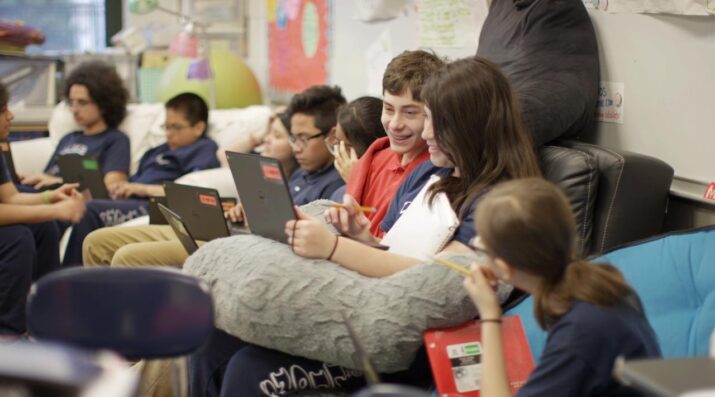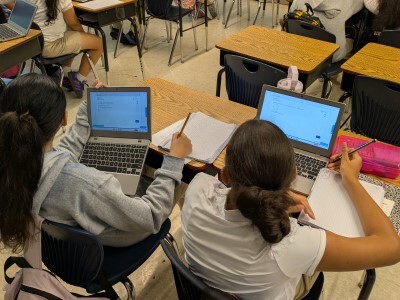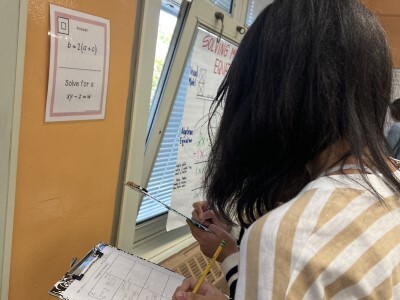A Student’s Most Important Lesson: Learning How To Learn
Topics

We’ve all had the experience of truly purposeful, authentic learning and know how valuable it is. Educators are taking the best of what we know about learning, student support, effective instruction, and interpersonal skill-building to completely reimagine schools so that students experience that kind of purposeful learning all day, every day.
To prepare students for a lifetime of learning, empower them with choice in how they consume and learn content.
Imagine all that a child learns from birth to age 18. Do you think that knowledge will carry them through the rest of their life?
The content acquired in K-12 schooling is important, says Diane Tavenner, CEO and Co-Founder of Summit Public Schools, but students also need to graduate with the skill to learn for the rest of their lives.
"Yes, [students] should leave us with this very important basic set of knowledge," Tavenner said in a recent interview. "But probably more importantly they should know how to learn. And they should know how they learn best."
What Does It Mean to “Learn How to Learn?”
Every teacher, every parent, everyone knows that children learn in different ways and at different speeds. So why don’t our classroom designs reflect that?
Traditionally, education has taken a one-size-fits-all approach, with the teacher disseminating information at the front of the classroom, in hopes of reaching all students.
In the Summit Learning approach, students are given more ownership of their learning. During blocks of Personalized Learning Time — about 30 percent of the week—students exercise choice in determining which content resources to review, learning how they learn best. They then apply this knowledge in interdisciplinary, real-world projects.
This design choice is backed by learning science outlined in The Science of Summit. For example, in his 2016 book The End of Average, Harvard researcher Todd Rose reiterates that students need to explore content at their own pace, based on their own interests.
“It’s not just about what the teacher does in the classroom,” says Aukeem Ballard, a former Summit teacher and current Vice Principal at Summit Tamalpais, one of Summit Public Schools’ 11 campuses in California and Washington. “It’s about what the teacher can support students in aspiring to do through the classroom. How do we give them what they need, step out of their way, and let them do the brilliant work that we know exists in their brain?”
Stepping out of the way might feel strange to educators trained in traditional teacher-centered models. But students are not left to their own devices during Personalized Learning Time. Teachers facilitate self-directed learning by coaching and offering targeted support through small-group and 1:1 interventions, as well as by providing extra scaffolding for students who need it.
This pays off in the long run.
“Self-directed learning is important for college because in college, your teacher is not always going to be over your shoulder,” says Edgar Anaya, a graduate of Summit Prep, Summit Public Schools' pioneering campus, located in Redwood City, California.
What Self-Directed Learning Looks Like in the Classroom

The Summit classroom looks different than a traditional classroom with rows of desks. During blocks of Personalized Learning Time, students progress through the playlists contained on the Summit Learning Platform at their own pace. Playlists introduce each topic and link to videos, slideshows, websites, readings, and practice worksheets. Presenting content in multiple modalities like this allows for greater practice, according to Daniel Willingham’s research in his 2009 book Why Don't Students Like School?
Students exercise choice in determining which resources to review and the environmental conditions under which they learn best. Some might work independently. Others in small groups. Others need tutoring from a peer or teacher. Summit calls this approach Individualized Pathways—every student progresses on a different path of learning but all working toward shared year-end goals.
Students take assessments when they feel ready, not at the same time as the rest of the class. That’s because learning is prioritized over pace. There’s no limit to the number of times a Summit student can take an assessment: Summit believes that there’s a lot of learning that happens in letting students persist through struggles and challenges, but if they fail an assessment more than a few times their teacher or mentor will intervene to help them determine how to move forward.
What Students Say About Self-Directed Learning
Jacqueline Castro, a former student at Chicago Public School’s Lee Elementary says her classroom experience changed when her teachers implemented Summit Learning.
“I've felt like I've learned more now,” she says. “If I ever struggled with something before, it's like, you struggled, you struggled, that's the end of it. The teacher's done teaching it, that's it. Now it's like, if I'm struggling with something, I get to keep learning it and learning it, and I actually learn it."
Grace Carrigan, a sixth grader at Ockerman Middle School in Florence, Kentucky, says with personalized learning she has to be much better at time management and motivation.
“It’s not really like your teachers are standing over you saying, ‘Do this, then do that.’ You kind of have to do it yourself,” Carrigan says. “You really have to manage your time well.”
Jackson LaCroix, eighth grader at Camp Ernst Middle School in Burlington, Kentucky, says he likes the autonomy of personalized learning.
“I get to be more creative, which I like being instead of just writing notes all day, which starts to get boring and it’s hard to study like that,” he says.
He says he likes learning with the Summit Learning Platform because he can review resources at his own pace. LaCroix says traditional learning environments are “boring because you and everyone else is all the same.”
What Teachers Say About Self-Directed Learning
“They’ve kind of become the drivers of their education, instead of the passengers,” says Kevin Fleischmann, a 20-year teaching veteran now working at Camp Ernst Middle School. “[They are] building those skills that they are going to carry with them throughout their life.”
“Who wouldn’t want that for their own child?” asks Melissa Hrycak, history teacher at Ockerman Middle School. “When they’re able to decide something for themselves and become independent in their learning?” Later in life a teacher’s not always gonna be standing there to say, ‘Oh, here’s what you need to do.’ This is really letting students take charge of their learning, directing it themselves, deciding what’s best for them. They’re not truly on their own but they’re building their own confidence in their ability to lead their lives in the future.”
Gina Dewar, 6th grade language arts teacher at Ockerman Middle School, says her students have more choice than they ever had in the traditional classroom environment. Using traditional teaching methods meant Dewar’s students had to learn content in the same way, depending on how she chose to deliver it that day.
“Now when they go into the Platform, they choose how they want to best learn it, so one student might be watching a video, and somebody else could be taking PowerPoint notes,” she says. “I think that choice and the personalized portion of the platform really helps with engagement overall.”
This shift in teaching style has meant less time preparing for lessons and making copies, and more time mentoring and supporting students on their learning journeys, Dewar says.
“Content is important, but it's more about getting kids to understand who they are and how they learn," says Kathleen Bourret, teacher at Lee Elementary and Castro’s former mentor. “Our kids can articulate to me now what kind of learner they are. They couldn't at the beginning of the year. I think that's one of the biggest things that kids learned along the way is 'How do I learn?'"
This post is the fourth in a series from Summit Public Schools about its three pillars of personalized learning: project-based learning, 1:1 mentoring, and individual pathways (this post). Learn more about Summit Learning at summitlearning.org.




